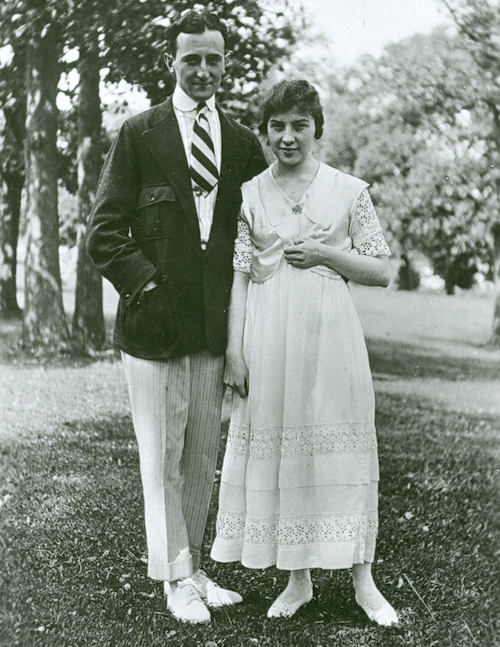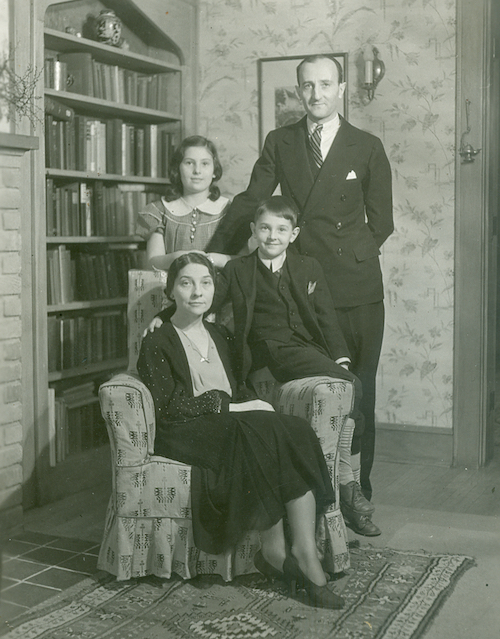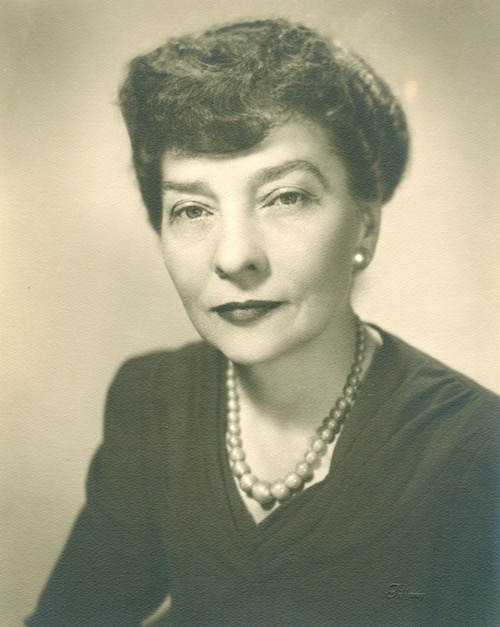Communiqué
The secret life of “The Codebreaker” on AMERICAN EXPERIENCE – Tuesday, September 27 at 10 pm
< < Back toAmerican Experience The Codebreaker
Tuesday, September 27, 2022 at 10 pm
Explore the Fascinating Secret Life of Pioneering Cryptanalyst Elizebeth Smith Friedman
American Experience The Codebreaker tells the fascinating story of Elizebeth Smith Friedman, the groundbreaking cryptanalyst whose painstaking work decoding thousands of messages for the U.S. government would send infamous gangsters to prison and bring down a massive, near-invisible Nazi spy ring in WWII. A suburban wife and mother, she led a secret double life that would only come to light decades after her death, when classified government files were unsealed. But together with her husband, the legendary cryptologist William Friedman, Elizebeth helped develop the methods that led to the creation of the powerful new science of cryptology and laid the foundation for modern codebreaking today. Based on the book The Woman Who Smashed Codes: A True Story of Love, Spies, and the Unlikely Heroine Who Outwitted America’s Enemies by Jason Fagone, the film is written and directed by Chana Gazit, produced by Chana Gazit and Hilary Klotz Steinman, and executive produced by Cameo George. Narrated by Kate Burton, The Codebreaker airs Tuesday, September 27, 10:00-11:00 p.m. on American Experience.

“Elizebeth Friedman is someone you may never have heard of, but she had a tremendous influence on our country’s history,” said Cameo George, American Experience executive producer. “As a woman in a traditionally male-dominated field that she herself pioneered, she fought sexism throughout her career but, through sheer brilliance, was able to shape an amazing legacy — taking down mobsters and helping to win not one but two World Wars! We are excited to share her remarkable story with viewers.”
Born in 1892 into a Quaker family in small-town Indiana, Elizebeth dreamed of escape from an early age. Following graduation from college, she became a teacher but quickly tired of the job and traveled to Chicago searching for a new life. While there, she visited the Newberry Library to see a rare copy of Shakespeare’s 1623 First Folio. Noticing her interest in Shakespeare, the librarian insisted she meet a local millionaire industrialist who had a particular interest in the subject. Just hours after their meeting, George Fabyan whisked Elizebeth off to Riverbank, his massive 350-acre estate in Geneva, Illinois.
At Riverbank, the eccentric Fabyan had established a vibrant community of scholars and scientists — part think tank, part laboratory. He assigned Elizebeth to one of his pet projects – trying to prove that the works of Shakespeare were written by Francis Bacon, who had supposedly inserted a secret code into the plays that confirmed his authorship. The job was tedious, but Elizebeth discovered she had a remarkable talent for decoding ciphers and recognizing patterns.

She met William Friedman at Riverbank, a geneticist and amateur photographer who also pitched in on the project to photograph and enlarge the Shakespeare texts. Together they dug into Fabyan’s collection of codebreaking books, exchanging insights and ideas; they soon fell in love. They also concluded that Fabyan’s Shakespeare theory had no validity and was nothing but a pipe dream. They stole away from Riverbank, married, and planned to leave, but the advent of World War I changed their plans.
In part, the first world war was unlike any before, because the invention of radio allowed the transmission of encrypted secret messages. Since the U.S. had no codebreaking agency, Fabyan saw an opportunity to help his country and enhance his fame, establishing America’s first codebreaking unit with Elizebeth and William in charge. Soon they were breaking codes for the War, Navy, State and Justice Departments, inventing their own methodology along the way. But six months into the war, the Army established its own Cypher Bureau. The Friedmans moved to Washington D.C., where William went to work for the Army Signal Corps and Elizebeth cared for their growing family.
In 1925, the Coast Guard unexpectedly called on Elizebeth. Prohibition had triggered an explosion of criminal activity, with rum runners taking to the seas to deliver bootleg liquor up and down the coasts using sophisticated codes on shortwave radios. Understanding the damage organized crime was inflicting on the nation, Elizebeth discovered how criminal syndicates ran their enterprises and became a crucial witness in a series of dramatic trials, taking down the operations of some of the most notorious gangsters in the country.
Elizebeth’s work went beyond decrypting the messages. She weaponized the data she gathered to pioneer the development of strategic intelligence, establishing the model for today’s fusion centers.

Her country called again in 1941, following the attack on Pearl Harbor. Now working for the Navy, Elizebeth and her team were assigned to monitor communications between a South American Nazi spy ring and the German high command. German U-boats were attacking Allied transport ships and by March of 1942, Nazi submarines had sunk more than a million tons of supplies and killed thousands of soldiers. Unraveling the encrypted messages, Elizebeth soon identified Hitler’s top spy in South America, Sargo, whose network was transmitting the Allied ship locations, including that of the Queen Mary, the Allies largest supply ship. Before the Nazis could strike, Elizebeth was able to warn the captain, who safely brought the ship to port.
Elizebeth’s remarkable counter-intelligence operation was thwarted by J. Edgar Hoover, who, eager for glory, ordered the arrest of the South American spies, which made national headlines but cut off the government’s information pipeline. When Sargo eluded capture and rebuilt his network, it was Elizebeth who was asked to monitor his communications again. In the end, she gave information to the Allies that allowed them to break up the ring and prevent the Germans from gaining a foothold in South America. Within months, the Nazi threat in the Western Hemisphere was eliminated, but Elizebeth was forced to sign an oath promising her secrecy until death. She died in 1980 in a nursing home in New Jersey, taking her secret life to the grave.

